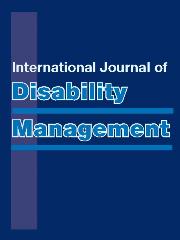No CrossRef data available.
Article contents
Sickness Absence as an Indicator of Health in Sweden
Published online by Cambridge University Press: 23 February 2012
Abstract
For many years Sweden has experienced high rates of sickness absence among employees. Sickness absence is often regarded as an indicator of health in a population, with low rates of absence associated with good health and high degrees of absence associated with poor health. The aim of this article is to examine this hypothesis — that the high rates of sickness absence in Sweden is an indicator of poor health. Sickness absence and health data was obtained from official government statistics in order to compare Sweden with six other European countries and a number of health-related variables. The hypothesis was not supported by the results of this study. While Sweden has a high rate of sickness absence, it ranks highly on a range of health variables when compared to other European countries. Instead, sickness absence may be more strongly associated with rates of unemployment. In times of high unemployment, sickness absence is low, and in times low unemployment, sickness absence is high. While public health programs are essential components of primary health care initiatives, the evidence from this study indicates that they are unlikely to have significant impact on sickness absence in Sweden. Instead more effort should be made to intervene early following sickness absence through providing timely vocational rehabilitation and disability management programs.
Information
- Type
- Articles
- Information
- International Journal of Disability Management , Volume 5 , Issue 2 , 01 December 2010 , pp. 40 - 47
- Copyright
- Copyright © Cambridge University Press 2010

